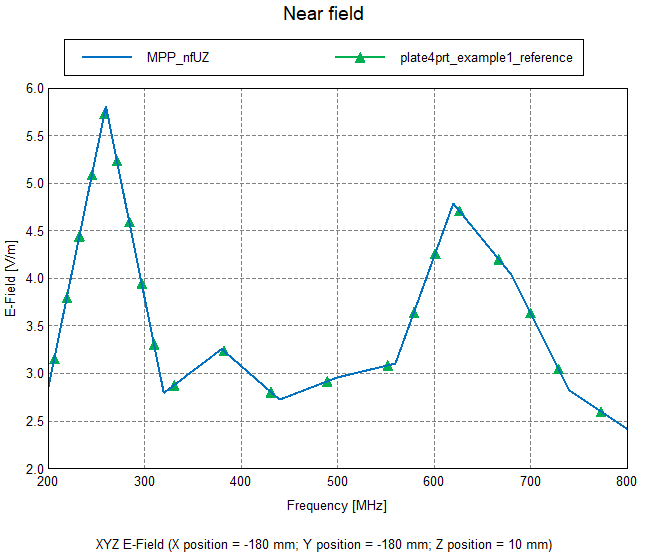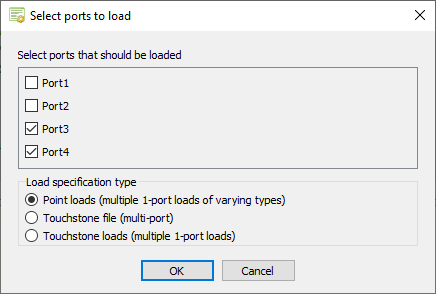Calculating the Port Parameters and Field Data
Use the Multiport post-processing application macro in POSTFEKO to calculate the port reflections and field data for a model (plate4prt.fek) with different load configurations.
-
Open POSTFEKO and run the Multiport
post-processing
application macro from the application macro library.
The Multiport post-processing dialog is displayed.
-
Specify the input method for the Multiport
post-processing
application macro.
For this example, a Feko model (plate4prt.fek) is used as input.Tip: Find the examples in the <FEKO_SHARED_HOME> directory:
%FEKO_SHARED_HOME%/installedapplicationmacrolibrary/POSTFEKO/MultiportCalculation/examples.
The Processing options dialog is displayed. -
Specify the processing options and data handling.
The Select ports to load dialog is displayed.
-
Specify the non-active (terminated) ports.
For this example, only Port_3 and Port_4 are non-active (terminated) ports.
The Load type for terminated ports dialog is displayed. -
Specify the load types for the non-active (terminated) ports.
The Select load parameters dialog is displayed.
-
Specify the load values for the non-active (terminated) ports.
The Select source parameters dialog is displayed.
-
Specify the excitations for the active ports and the load impedances.
The new results are calculated and available in POSTFEKO in the Project Browser under Stored data.
Figure 7. The multiport results under Stored data. 
-
[Optional] Run the plate4prt_example1_reference.cfx in
CADFEKO, load the
plate4prt_example1_reference.fek in the
plate4prt.pfs session and compare the results to the
Solver.
The field data is compared as calculated by the Multiport post-processing application macro to the solution obtained by the Solver, see Figure 8 and Figure 9.
Figure 8. Comparison of near field values as a function of frequency at an arbitrary position. 
Figure 9. Comparison of far field gain over frequency in an arbitrary direction. 





